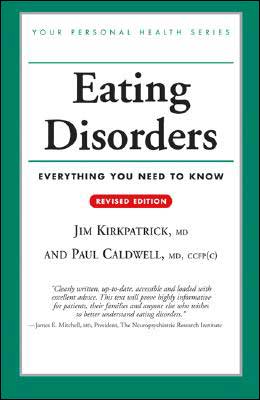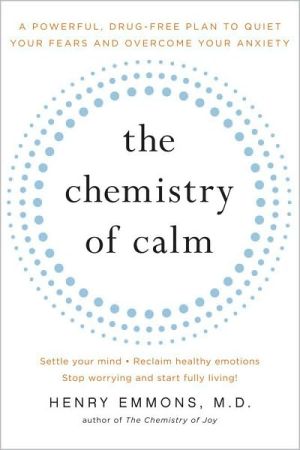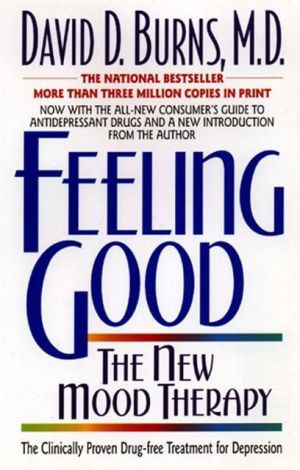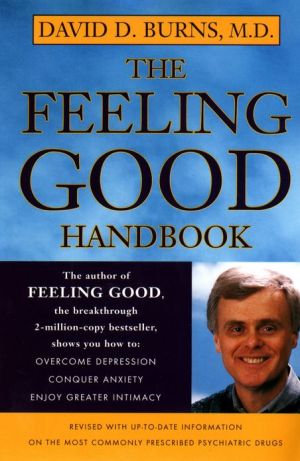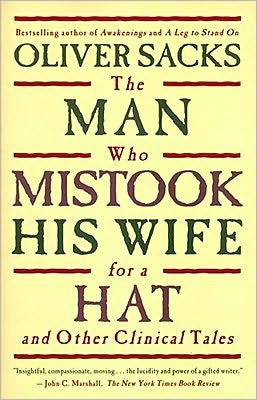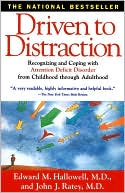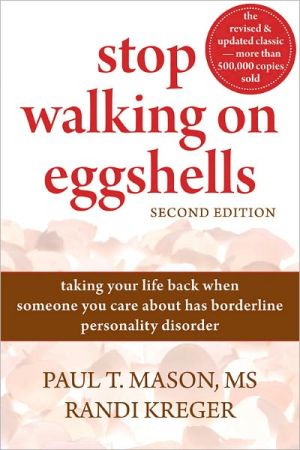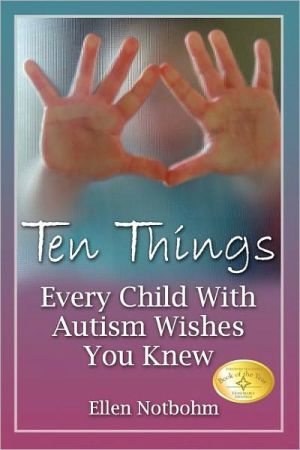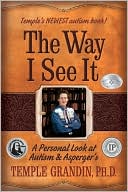Eating Disorders: Everything You Need to Know
Revised and updated.\ In a society where people have access to healthy, nutritious food, why do so many -- especially girls and young women - develop eating disorders that can lead to illness, psychological anguish, organ damage and death?\ This revised and updated edition of Eating Disorders provides expert advice on the causes, effects and treatment of anorexia nervosa, bulimia nervosa, binge eating and a host of less familiar eating disorders. The authoritative text is non-technical and...
Search in google:
Expert advice on the causes, effects and treatment of anorexia nervosa, bulimia nervosa, binge-eating and other eating disorders. Eating Disorders Review - Joel Yager I will gladly recommend this thin, easy-to-read, accurate, informative and helpful book to my patients and their families.
Introduction:\ The relationship we have with food is not at all a simple one, but rather a complicated, multi-faceted connec tion to this biological necessity.\ From an infant's suckling of breast milk, through the difficult years of teaching toddlers to eat properly, and on into adult life, our choice of food and our relationship to our choices are central to our daily existence.\ All of us have experienced hunger — that uncomfortable feeling somewhere in the abdomen that is eliminated by eating. We live in a time of such excess that, if we experience hunger at all, it's a brief disturbing symptom, an inconvenience only, often occurring simply because of poor planning. Our ancestors knew a different kind of hunger-a much more powerful and threatening anguish that persisted for days or weeks on end and would not be quieted. Hunger was a threat to their lives, a powerful physical signal of inadequate nutrition, and it screamed at them, day after day, from the hollows of their bodies.\ Why We Eat What We Eat\ Most people in the developed world realize, at least on an intellectual level, that we need an adequate volume and variety of food to survive. We understand the necessity of eating food from various groups to ensure balanced nutrition, but we choose our foods not only because of their nutritive value, but also because of the sensual pleasure they offer. The smell of fresh-perked coffee, the crunch of an apple, the frozen sweetness of ice cream, the tingle of a fresh orange slice are all examples of the huge variety of pleasures food can provide. \ Eating is also a social phenomenon. It is the focus of our daily mealtime gatherings. It's an acceptable break from work and a time to share with family or friends.\ Food is often associated with festivity and reward. The feasts of earlier times have now evolved into the turkey dinner "with all the trimmings" we eat at holiday time, the birthday cakes we serve our children and the thousands of "special" meals we serve each other as celebrations or symbols of love. On an individual basis, food is often used as a reward or for solace, as a comfort in times of stress or distress. Somehow the feeling of fullness, of satiety, of giving in to the food we eat, is associated with feelings of peace, calm and relief from anxiety. Our eating and our emotions are closely connected.\ For every society and in every culture, certain foods have been forbidden, for either social or religious reasons, and others have been encouraged. Christians ate fish on Fridays, not because of any inherent nutritional value of fish as a food, but to remind them of Jesus, who said to his disciples, "I will make you fishers of men." The Judaic and Muslim tradition of avoiding pork and eating only food that is kosher or halal may have originated in an attempt to avoid illnesses carried in pork, but now is enforced as a confirmation of faith. Around the world, certain foods are associated with good luck, prosperity and success. Clearly, we find many values in food apart from its nutrition.\ When Things Go Wrong\ For some people, particularly some young women, this relationship with food changes and becomes quite abnormal. Their attitudes to food, their food choices and their eating become disordered, producing a group of medical problems (such as anorexia nervosa and bulimia) referred to as eating disorders. Food is no longer seen as a daily requirement whose acquisition is pleasurable. Rather, it becomes something to be feared or dreaded and hence avoided (as in anorexia nervosa), or a forbidden temptation that, though not enjoyed, cannot be denied (as in the case of bulimia). The emotional turmoil inside is reflected in abnormal eating. These are not simply problems of eating, but rather problems of feeling. \ One of the most difficult challenges in approaching eating disorders is understanding what is actually happening in the minds of these sufferers. Our understanding must begin with an appreciation of the complexities of our normal relationship with food. From this starting point we can begin to unravel the interwoven psychological and physical abnormalities that define these eating disorders.\ People from any cultural or ethnic background can have an eating disorder. Though these disorders do occur in males, most (90 percent) occur in women, especially young and adolescent women. The disorders produce a progressive change in personality that eventually affects both the physical and the mental well-being of the sufferer.\ There are four main eating disorders. Anorexia nervosa is a disorder of self-starvation in which marked weight loss is seen, as a result of either severe restriction of diet, or some mechanism (such as vomiting) to prevent food from being properly absorbed. Bulimia nervosa is a disorder in which bouts of extreme overeating are followed by deliberate vomiting or purging by some other means (such as laxatives or diuretics), or by periods of fasting. Binge-eating disorder consists of repeated episodes of overeating (bingeing) not frequently accompanied by vomiting, purging or fasting. The so-called not otherwise specified group of eating disorders includes all behaviors of eating and attitudes toward food that are considered abnormal but do not fit into the strictly defined medical diagnoses mentioned above.\ Eating disorders happen to good people, young people, full of promise and potential, and they happen without the young people either choosing them or being able to control the process. An anorexic is no more able to prevent her eating disorder than someone with pneumonia is able to recover completely from the disease without medical intervention.\ Eating disorders happen in good families, in which the parents truly care for their children, love them with all their hearts and have done their best to nurture them.\ Why do these disorders happen? There is no easy answer to this question. These are complex and often confusing afflictions, and the processes that initiate and then perpetuate them are complicated, with powerful yet concealed forces that effect change in an invisible manner.\ Usually, a combination of factors contributes to someone's abnormal relationship with food, and then the new relationship alters the individual, reinforcing itself and pushing the person away from those around her. Somehow, changing their basic relationship to food is appealing to these young people — it allows them to go somewhere, to achieve something, that was not possible before. Changing the relationship, adjusting it, makes some difference in their lives, a difference that is somehow better, and thus the behavior persists, contributing to a further sequence of events that defines the illness.\ It is possible for most of those with eating disorders to be helped. However, it's very difficult to know exactly how to help — what to do, what to say, how to behave, how to show love, how to direct them towards recovery-in short, how to begin to help disentangle the bewildering knot of feelings and perceived failures. Helping these people does not come intuitively. It's not enough to reach inside yourself and feel the power of your own love, and extend that out to them, even though it's impossible not to try.\ To help, to really help, demands an understanding of the circumstances and influences that initiated the disorder, and the factors and forces that perpetuate it. Without such an understanding, recovery does not take place, and lives are wasted. If you yourself have an eating disorder, or if someone you love suffers from one, reading this book will be, at the very least, a beginning step on the road to recovery.\ What do people feel their disorders are about?\ "They're about control, fear, problems of identity (especially issues that arise from being a woman and the demands and expectations projected at a woman), and our culture's obsession with image and a narrowly defined beauty." \ "They're about not honoring the self. They're about fear and isolation"\ "Insecurity."\ "An obsession to be thin. I was overweight in my childhood and my teens. I hated it. I went on diets and lost and regained weight several times before my eating disorder began. I liked the attention I got when I was thin, especially when I got too thin — although I didn't think I was thin enough. No matter how trim I got, I liked my body. At least I had control over something. At least, I thought I did."
Contents Preface Acknowledgements Introduction Chapter One: Anorexia Nervosa Chapter Two: Bulimia Nervoas Chapter Three: Other Eating Disorders Chapter Four: Factors That Complicate Eating Disorders Chapter Five: Understanding Eating Disorders Chapter Six: Medical Treatment Chapter Seven: Medications That May Help Chapter Eight: Psychological Treatments Chapter Nine: The Road to Recover Glossary Further Resources Index
\ E-StreamExpert advice... answering concerns surrounding eating disorders and offering advice to patients and families.\ — Mark Spasser\ \ \ \ \ E-Stream\ - Mark Spasser\ Expert advice... written both for the general reader and non-specialist health professional... answering concerns surrounding eating disorders and offering advice to patients and families.\ \ \ \ Joel YagerI will gladly recommend this thin, easy-to-read, accurate, informative and helpful book to my patients and their families. \ —Eating Disorders Review\ \ \ \ \ Kathy SenaOne of the most helpful books around on this often-confusing subject.\ —L.A. Times Syndicate\ \ \ \ \ BooknewsThis overview for general readers and non-specialist health professionals answers concerns surrounding eating disorders and offers hope and advice to patients and families. It unravels psychological, emotional, and physical factors; details symptoms of different types of eating disorders; lists early warning signs; and describes medical and psychological approaches to treatment. Kirkpatrick is a member of the British Columbia Eating Disorder Association. Caldwell has been a family practitioner for 25 years. Annotation c. Book News, Inc., Portland, OR (booknews.com)\ \ \ \ \ From The CriticsReviewer: Diana Marta, BSN, RN(Rush University Medical Center)\ Description: This is a clearly written and thorough explanation of eating disorders, including their variations (anorexia, bulimia, binge eating, and others), complicating factors, treatment approaches, and the recovery process. \ Purpose: This book is intended to convey a better understanding of eating disorders from the perspective of practitioners, patients, and their families. Since eating disorders are so often misunderstood or oversimplified in the media, this book helps to clarify our understanding of what has become an increasingly common disease process.\ Audience: The authors are writing for anyone affected by or interested in eating disorders, with the additional goal of providing a reference for those advocating for more and better treatment facilities. Both authors are family practitioners with extensive clinical experience treating patients with eating disorders.\ Features: Beginning with a complete description of each disorder, the book goes on to describe complicating factors such as depression and substance abuse, cultural and personal issues that perpetuate the disorders, medical, pharmacological, and psychiatric treatment options, and finally, the recovery process. Highlighted excerpts from patients help to present their point of view, giving it more credibility, certainly, for those suffering from one of the disorders. A section at the back gives a list of treatment facilities in both the U.S. and Canada.\ Assessment: This is an excellent resource for people wanting to develop a better understanding of this topic, whether it affects them personally or someone they know or treat. It would be especially helpful in family therapy, since it can be understood by almost all age groups. It also provides a tool for those who hope to advocate for better treatment choices and gives hope to patients and their families that recovery is possible.\ \ \ \ \ Eating Disorders Review\ - Dr. Joel Yager\ This highly informative book will provide patients, families and others with an authoritative, up-to-date review of all aspects of eating disorders ... the medical aspects of eating disorders are covered extremely well ... I will gladly recommend this thin, easy-to-read, accurate, informative and helpful book to my patients and their families. I expect it may answer many questions for them and raise others that we can fruitfully discuss during treatment.\ \ \ \ \ \ L.A. Times Syndicate\ - Kathy Sena\ One of the most helpful books around on this often-confusing subject.\ \ \ \ \ \ 3 Stars from Doody\ \
